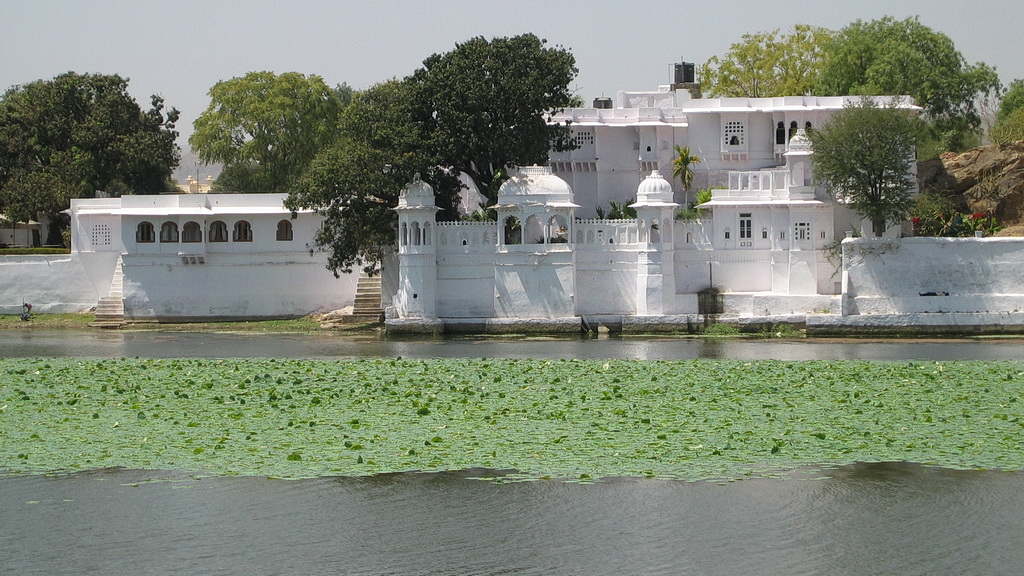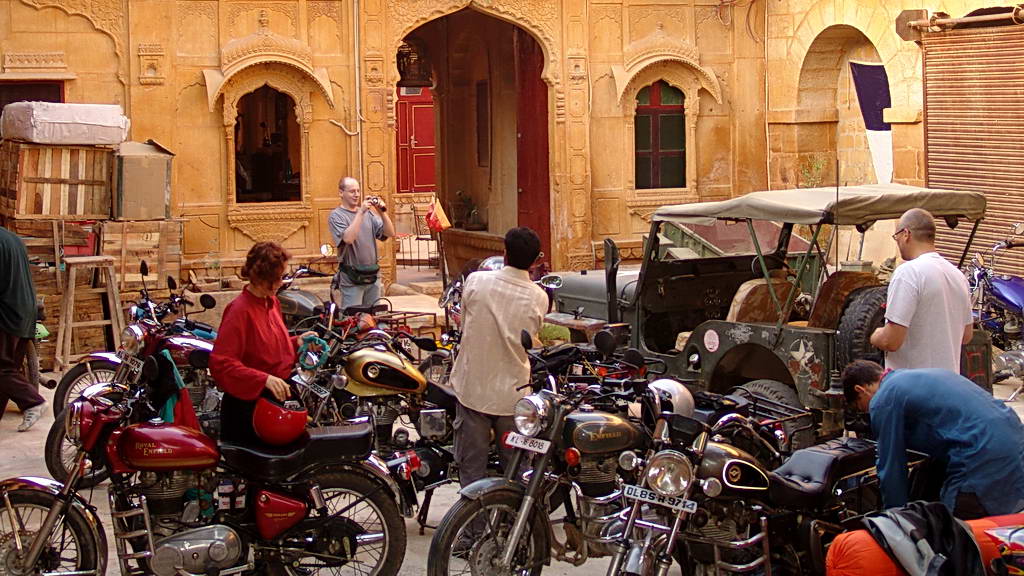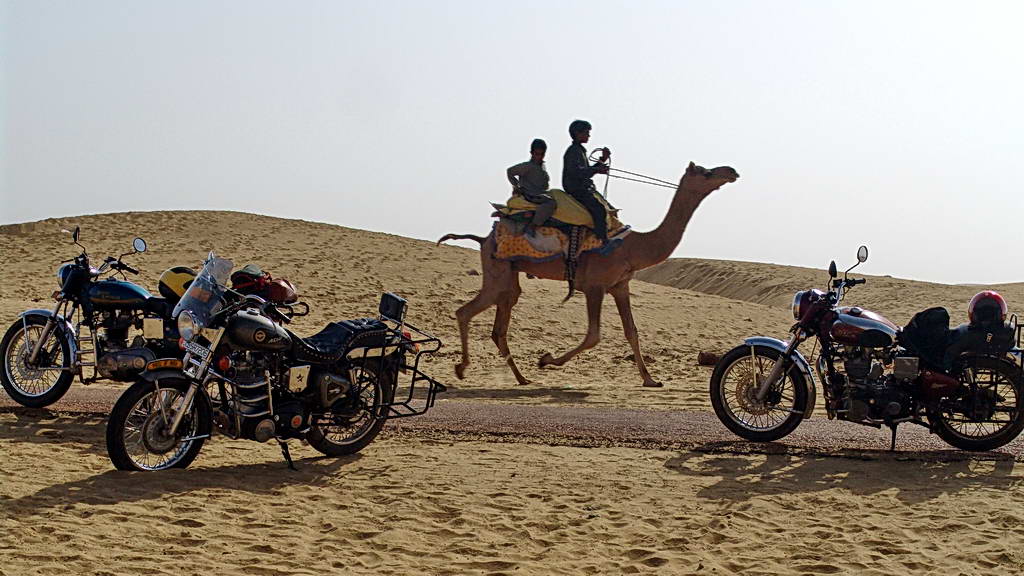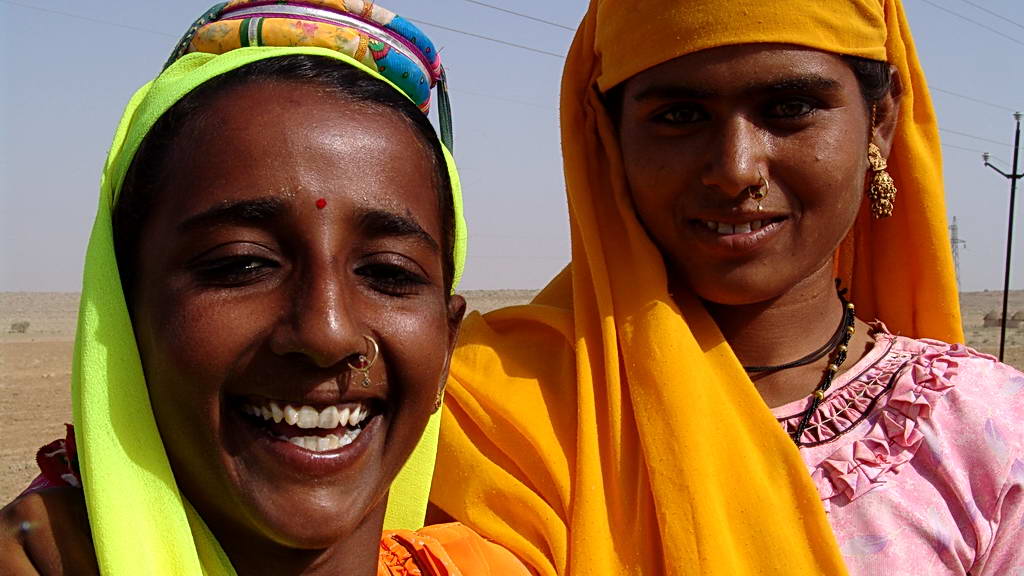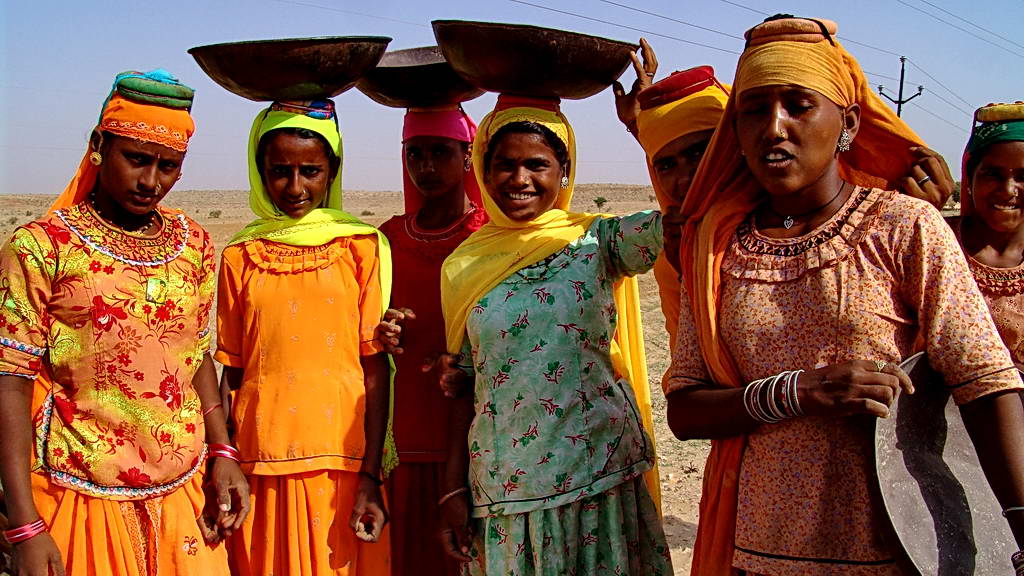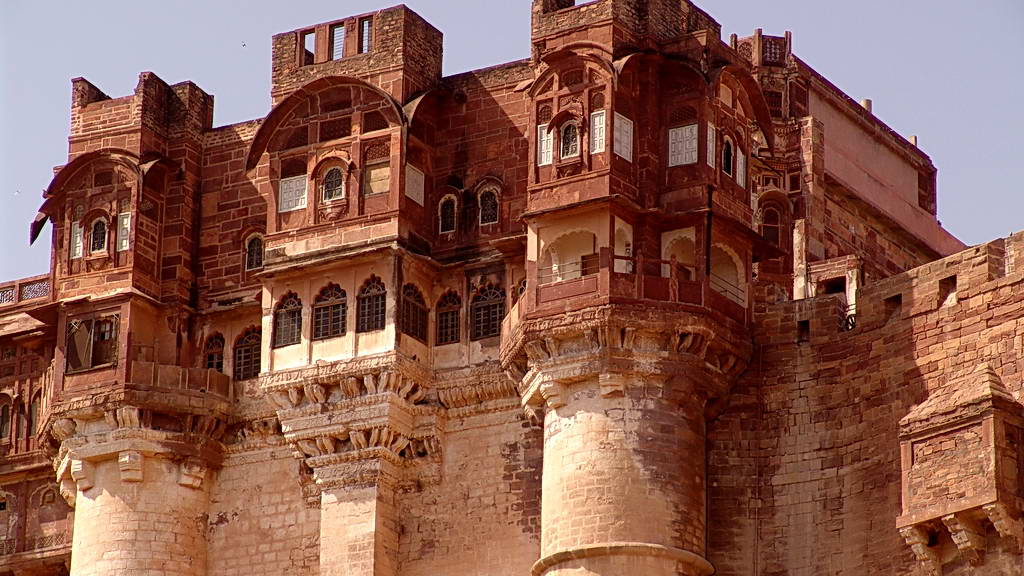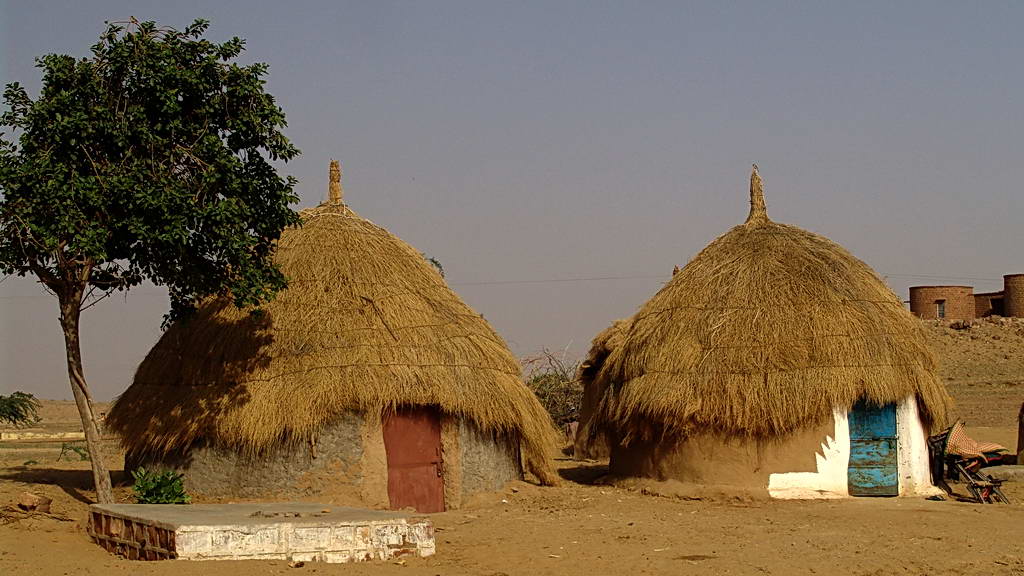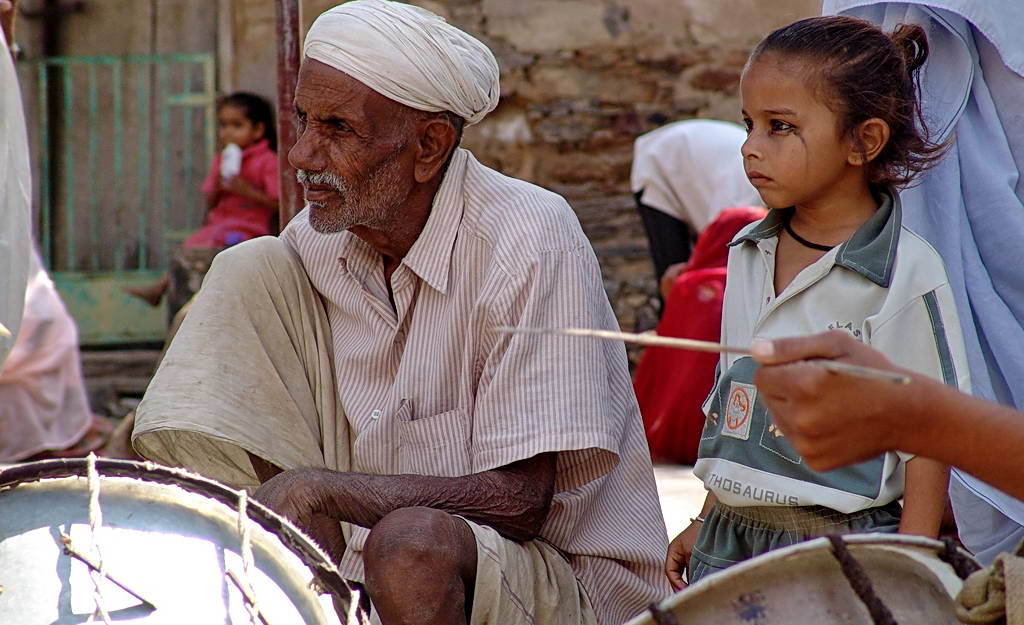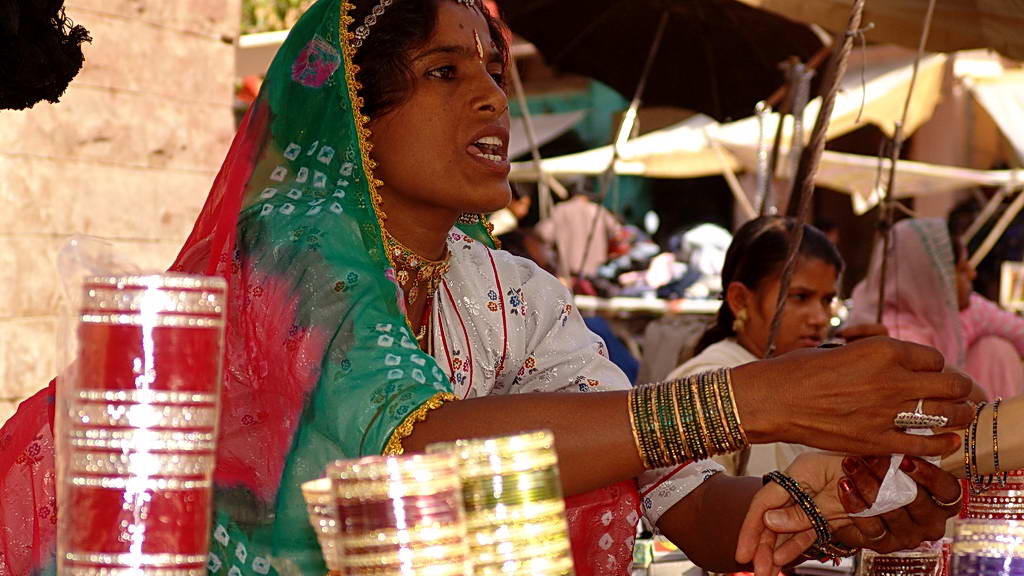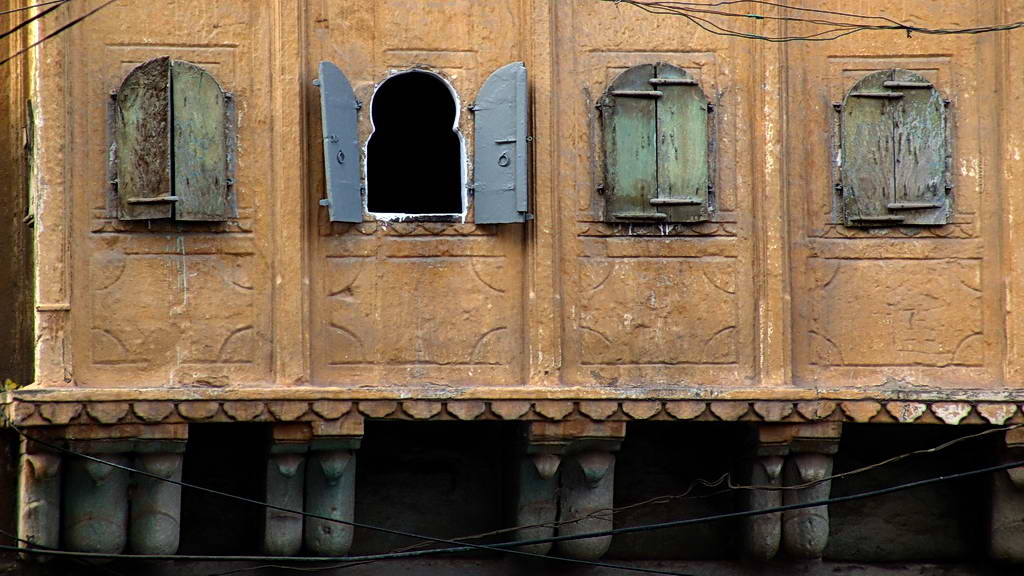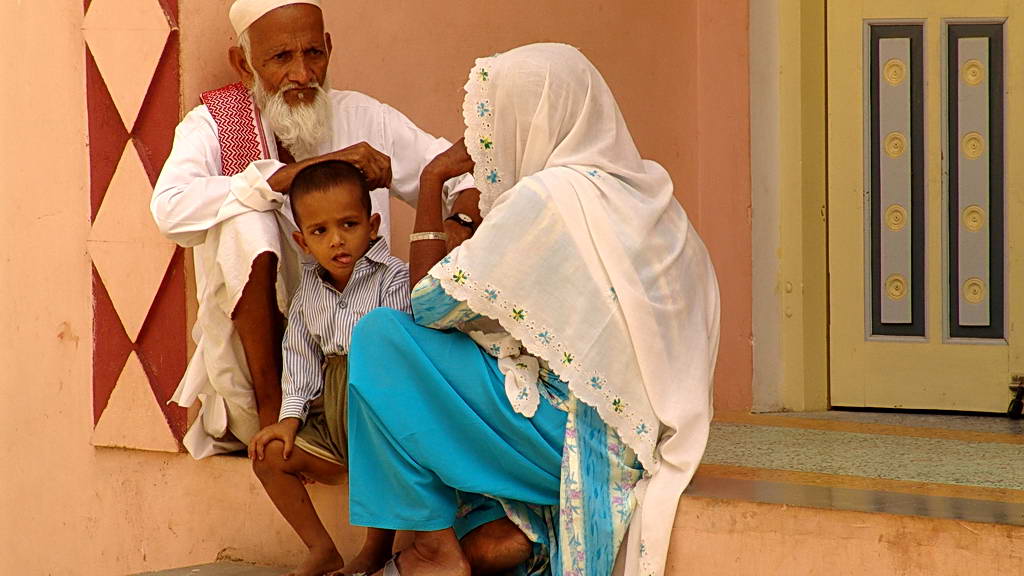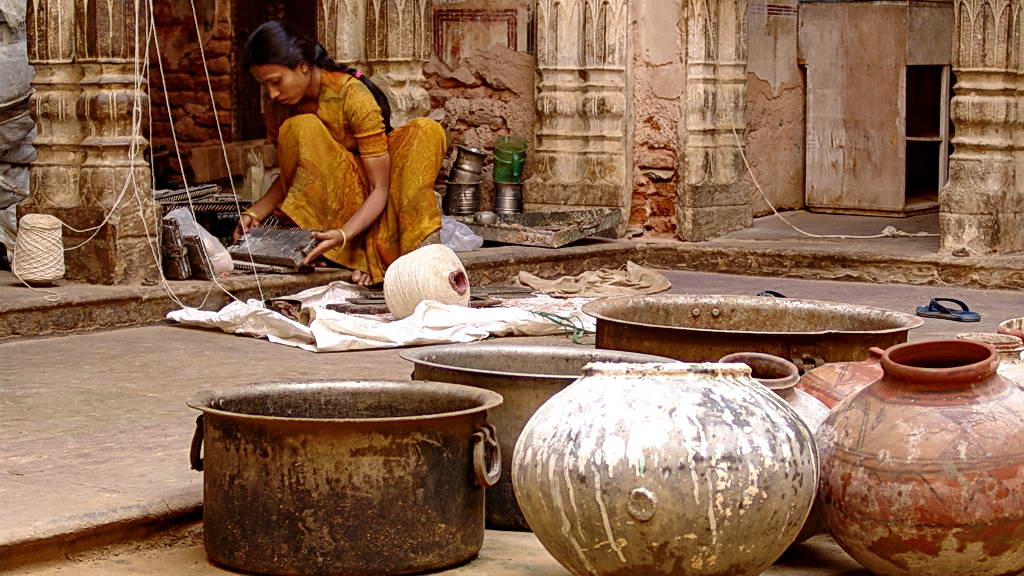Rajasthan
More than 1300 years ago, the wild warrior tribes of the Rajputs, "son of the princes", settled in the area which we know today under the name of "Rajasthan". Chased by Muslim invaders, they came from the surrounding states of Gujarat, Uttar Pradesh and Punjab, subdued the local tribes, called Bhils and Minas, and erected their kingdoms hostile to each other, traces of which we still can see today.
The mythological origins of the 36 Rajput clans were three mythological lines of descendance, the "Suryavansa" or sun race, who trace their origins to Sri Rama, the "Induvansa" or moon race, who see themselves as descendants of Sri Krishna, and the "Agnikula", born from fire, who originate from the flames of a holy fire of Mount Abu.
The history of Rajasthan is the history of endless bloody wars amongst the different clans and against aggressors from the outside. The area was repeatedly occupied by alien dictators, since the princes were more occupied with fighting against each other instead of forming an alliance to defend the country against invaders.
This senseless bloodshed ended only when the British signed protection treaties with the local royalty, which on the one hand granted them save incomes as well as positions and titles, but on the other hand degraded them to powerless chess figures on the board of British power politics. Uprisings of the suppressed village population and of the middle class began to weaken this power constellation and finally caused its collapse under the leadership of Mahatma Ghandi.
In 1947, all Rajput empires became part of the Indian nation state. In order to motivate them to cooperate, the Rajputs were granted secure incomes as well as positions and titles, but at the same time degraded them to the role of powerless figures on the chess board of British power politics. Rebellions of the suppressed rural population and the middle class destabilized this power construct and finally toppled it under the leadership of Mahatma Gandhi.
In 1947, all Rajput states were integrated into the newborn Indian nation state. In order to make them cooperate, the sun-, moon- and fireborns were granted a fixed income as well as maintenance of their titles and privileges. Indira Gandhi brought this to an end by the end of the 50s. The more business-prone among the formerly incredibly rich Maharajas transformed their castles and palaces into hotels or other tourist attractions, the others got poor and simply disappeared from sight.
Following Madhya Pradesh, Rajasthan today is the second largest state of Indian confederation. Most of it is desert and sand. Only in the South, we find a richer vegetation as well as mountains and hills.
During our 19 days trip, we will visit all of the most significant places of Rajasthan. Our tour starts in New Delhi. We'll bring you to your hotel, where you can recover from the long journey. Early next morning, the car will take you to Mandawa, where the bikes are waiting. From there, we ride the bikes to Bikaner and Jaisalmer. From there we head for Jodhpur, Ranakpur, Udaipur and Bundi, until we reach Ranthambore. Finally, we'll visit Jaipur and the Taj Mahal in Agra, before our trip comes to an end in Delhi.
Our program includes visits of forts and palaces, day trips to remote temples and havelis, and of course we&squot;ll get a camel ride in the desert. Rajasthan is a feast for our eyes. The dull yellow and grey of the desert is contrasted by the incredibly colorful Saris which the women of this state are wearing. The palaces and havelis outdo each other with their architectonic and artful beauty.
This tour is easy to master for any experienced road driver. The total distance is appr. 2400 km, the longest day trip 330 km. You only have to prepared for "a little bit higher" temperatures. Remember, Rajasthan is a desert state. As far as possible, we sleep in very good middle-class hotels, former palaces and havelis. The tours take place during the best time for traveling during the year, in winter/spring and autumn. They are pure pleasure in every respect and will become an unforgettable adventure.
Routing
1. Day: Arrival
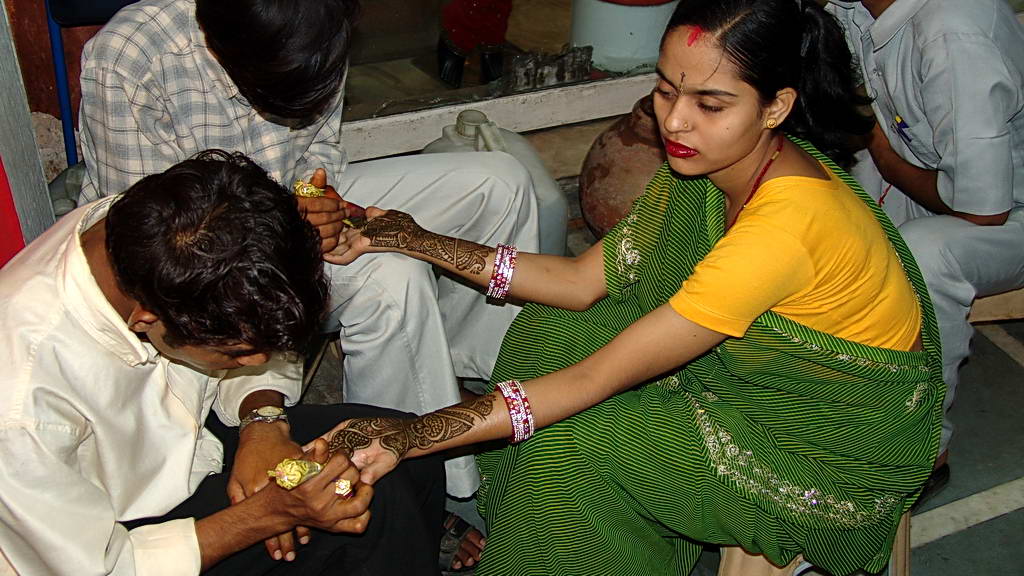
We arrive at Delhi airport (DEL), usually in the middle of the night. We pick you up at the airport and bring you to the hotel.
2. Day: Transfer Delhi - Mandawa
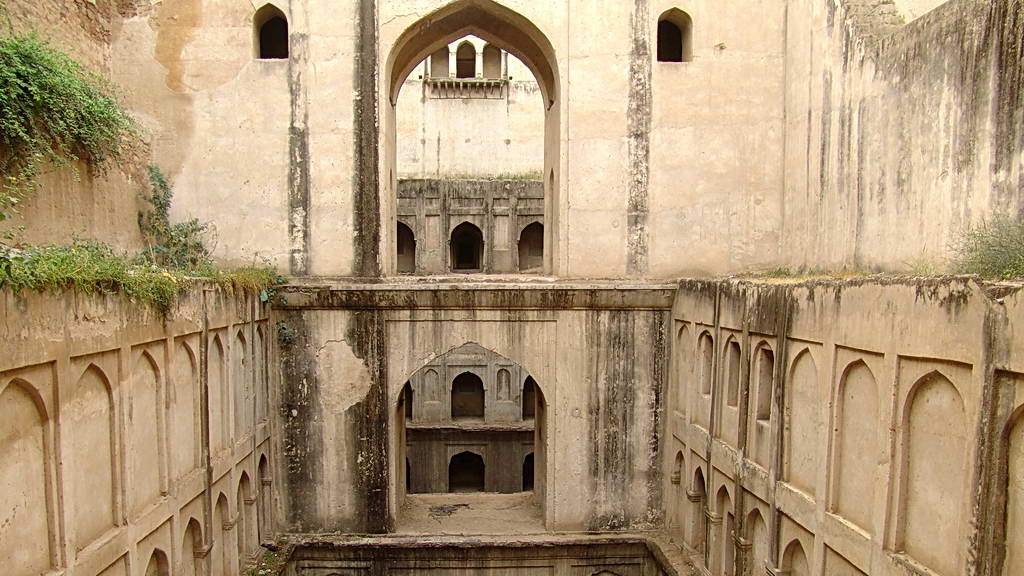
Transfer to Mandawa. About 7 hours later we'll arrive at our Haveli in Mandawa, in the Shekhawati region. You'll have time to relax and enjoy the day.
3. Day: Trips in the region of Shekkawati / ca. 100 km
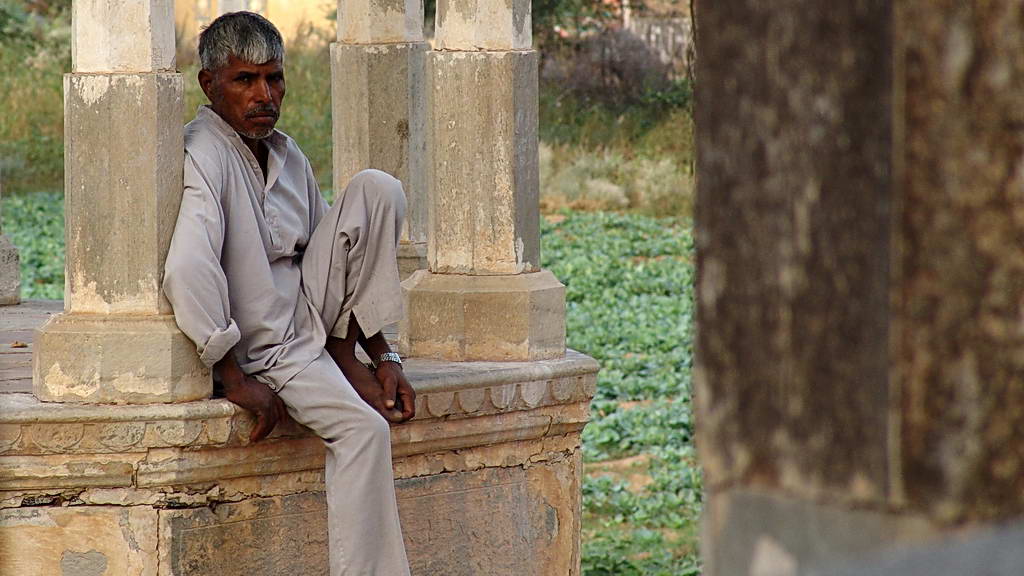
After a restful night and a sumptuous breakfast, we set off on a half-day motorcycle excursion. We get to know the bikes and the Indian traffic. And we discover some of the famous havelis and fountains of Shekhawati.
4. Day: Mandawa - Bikaner / ca. 225 km
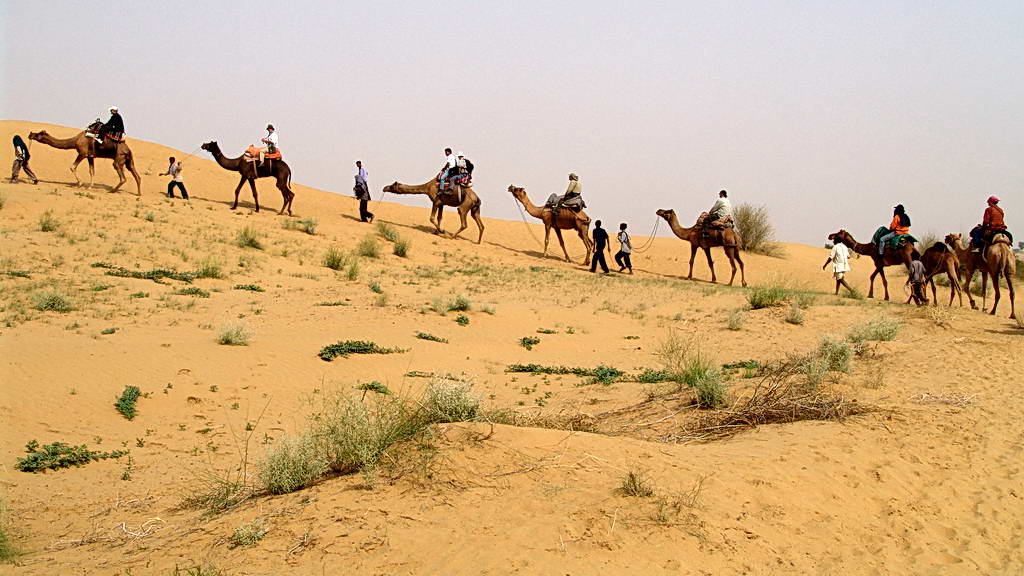
Today our round-trip starts. First stop is in Bikaner. We get up early. By 15:00 p.m., they expect as at the hotel. Now an adventure of the special kind is waiting for us. After a short ride with the jeep we'll arrive in a small desert village where the camels are waiting for us. On four legs, we now explore the desert of Rajasthan, where we will spend the night open air, after a voluptuous meal.
5. Day: Bikaner / ca. 80 km
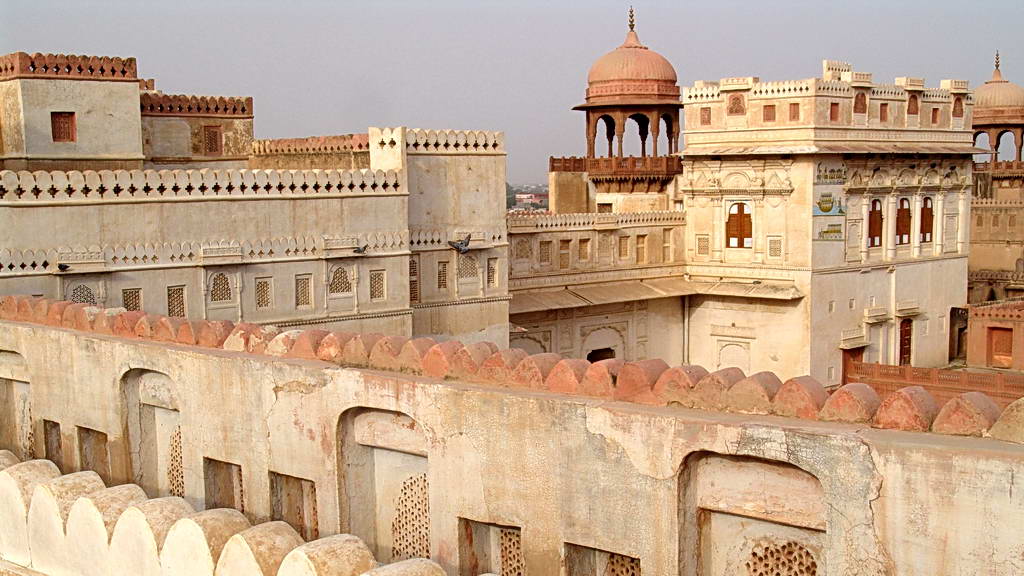
After breakfast, camel wagons and jeeps will take us back to the hotel. Together we'll visit Fort Jhunagarh, one of the most impressive fortresses in Rajasthan. It gives us a vivid impression of the wealth of the maharajas in former times. Optional: visit of the rat temple in Deshnok. The small animals have a good life here, and it is considered a sign of good luck if a white rat runs over your naked toes.
6. Day: Bikaner - Jaisalmer / ca. 330 km
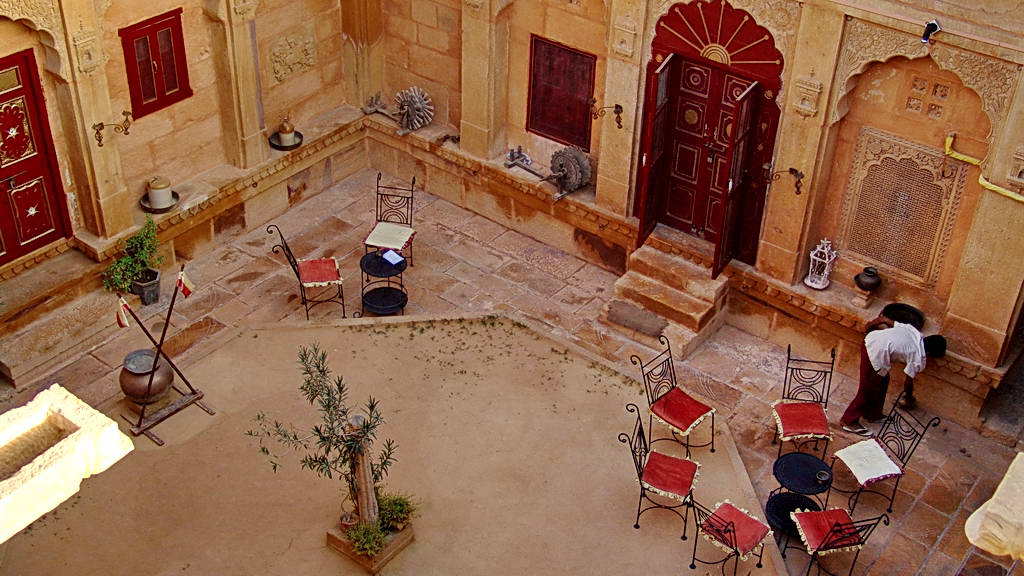
Again we get up early and mount our bikes. Today we'll master the longest distance of the whole tour, 333 km to Jaisalmer. Fortunately, the streets and roads in Rajasthan are in excellent shape, with only little traffic. The further we come West, the less vegetation, until we'll find only sand and rubbles with some isolated thorny bushes.
7. Day: Jaisalmer
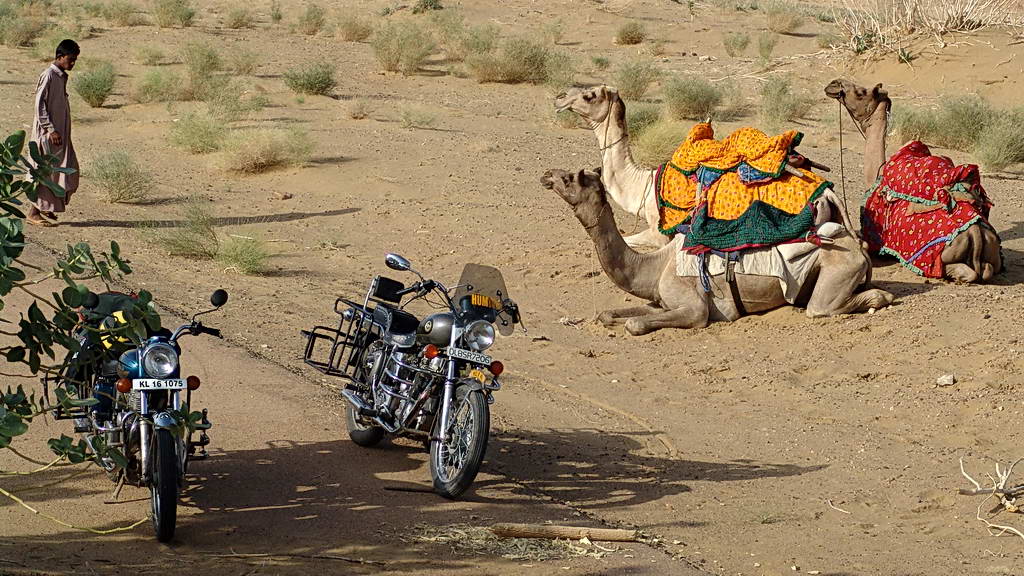
Jaisalmer, the city in the very West of Rajasthan, is separated by only a few kilometers from the border to Pakistan. We'll stay in a Haveli which is run by one of the last noble families of Jaisalmer. Everyone may spend the day as he or she prefers. Jaisalmer is good for relaxation and enjoying yourself. Besides that, it is an excellent place for acquiring souvenirs of all kinds.
8. Day: Jaisalmer - Jodhpur / ca. 285 km
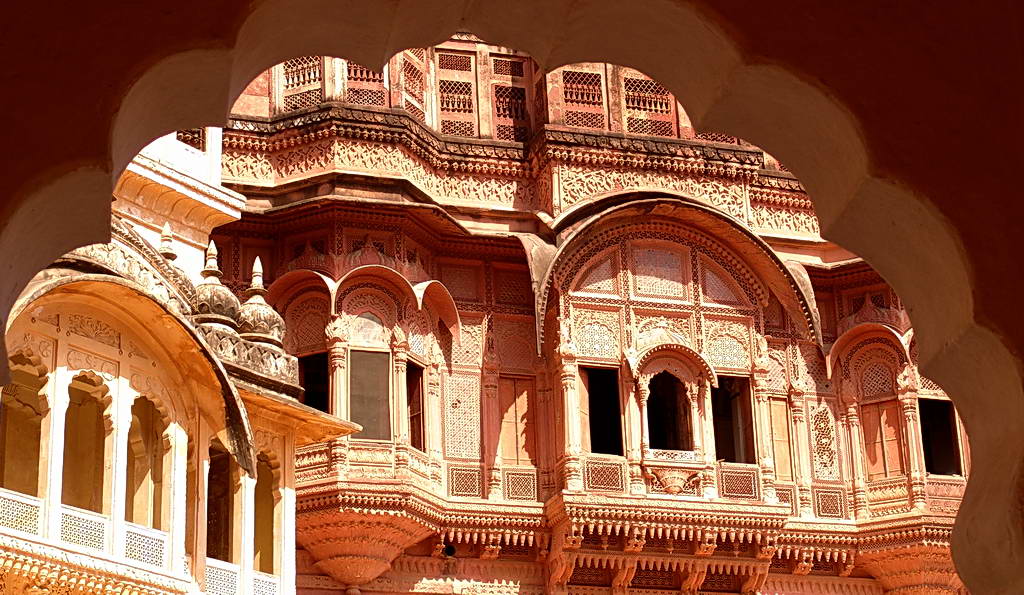
Today's trip is a pure desert trip. From Jaisalmer to Jodhpur, we'll have only sand, rubbles and thorny bushes.
Jodhpur is a typical Indian big city, hectic and loud and happy. However, our hotel complex is like a peaceful oasis in the middle of traffic and car horns. The large pool invites you to swim and the beautiful garden to relax. If you want, you can take a walking tour of the Jodhpur bazaar on your own.
9. Day: Jodhpur
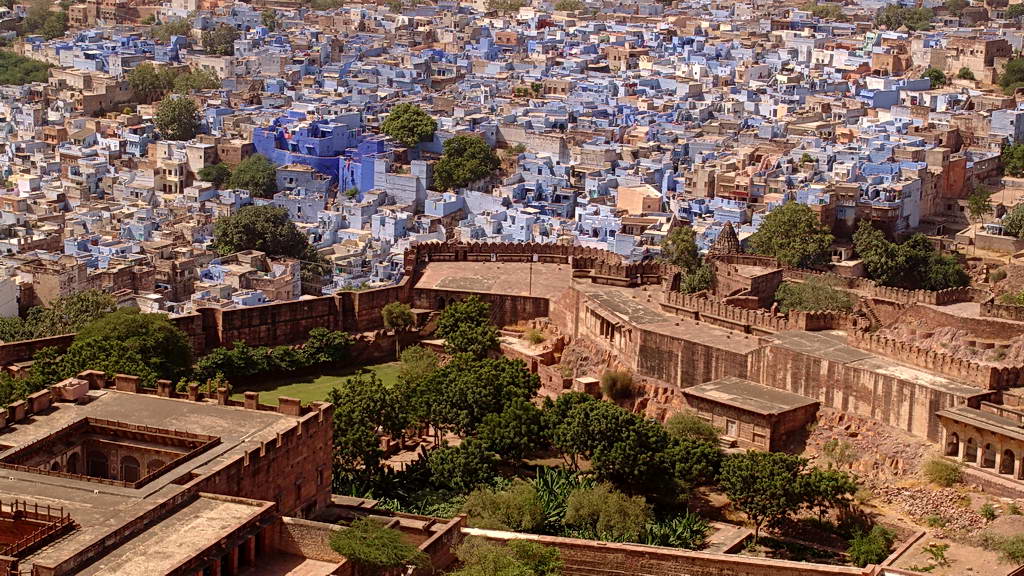
Today we'll visit the Meherangarh Fort. Afterwards we drive to the Jaswant Thada Memorial built with white marble, which is also called the Taj Mahal of Jodhpur. But the actual highlight of the day will be the Makhani-Lassi in the Shri-Mishrilal-Hotel. Insiders claimed that this is the best Lassi in all of India. I'm curious what you will say.
10. Day: Jodhpur - Ranakpur / ca. 180 km
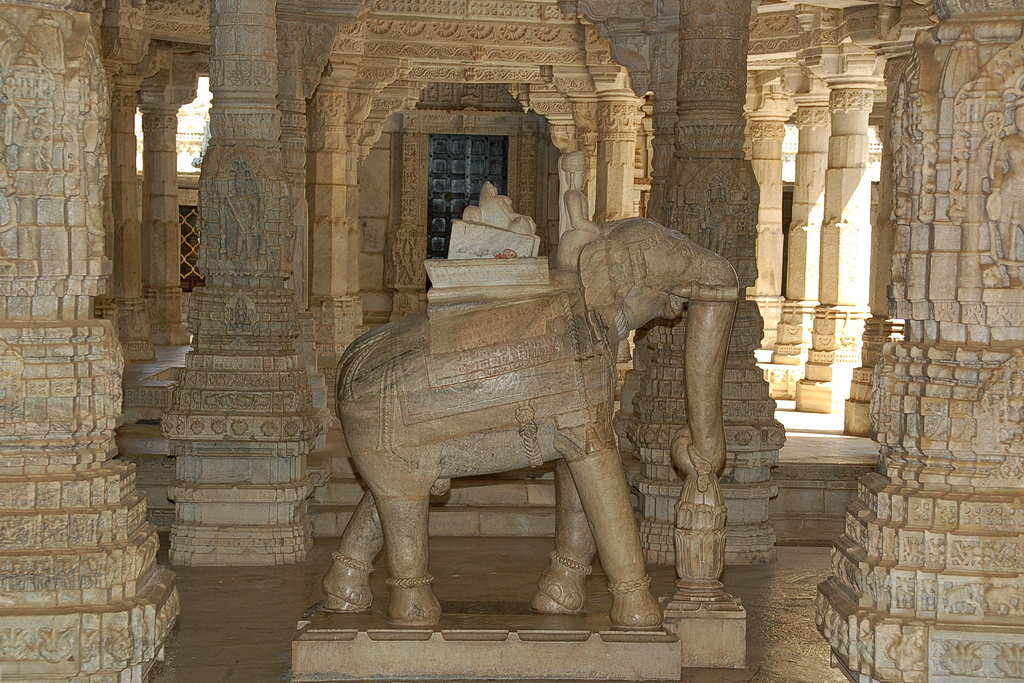
We leave Jodhpur in Southern direction. After some kilometers, we'll leave the highway and take a pleasant ride across the agricultural fields. Picturesque villages and tiny towns invite us for a tea break. In the afternoon, we'll reach Ranakpur and check-in our resort. There will be enough time for visiting the famous Jain Temple and take a walk to a nearby natural park. Afterwards, a giant pool invites us to take a bath and rest.
11. Day: Ranakpur - Udaipur / ca. 170 km
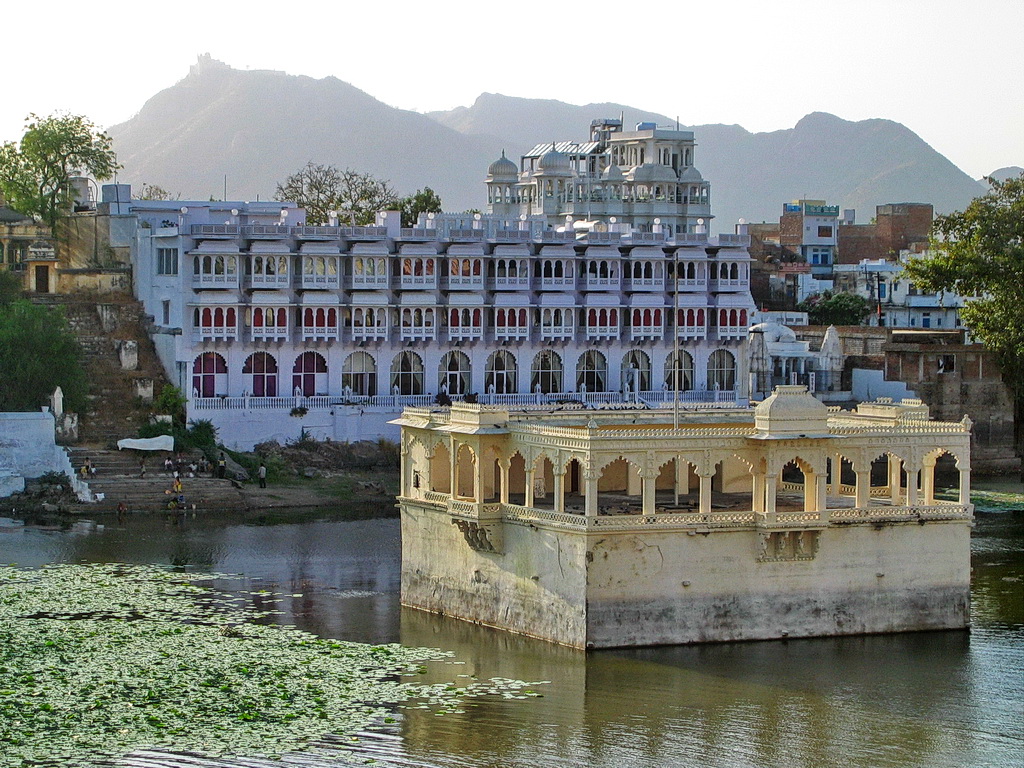
Before noon, we'll visit the fortress of Kumbalgarh. The area is gigantic, the walls alone are 36 km long, and so large that 8 horses can ride along side by side. We'll visit the palace and some of the numerous temples spread over this beautiful natural site. By noon, we'll continue the trip, and in the late afternoon, we'll arrive in Udaipur, the most romantic city of India as many people say.
12. Day: Udaipur
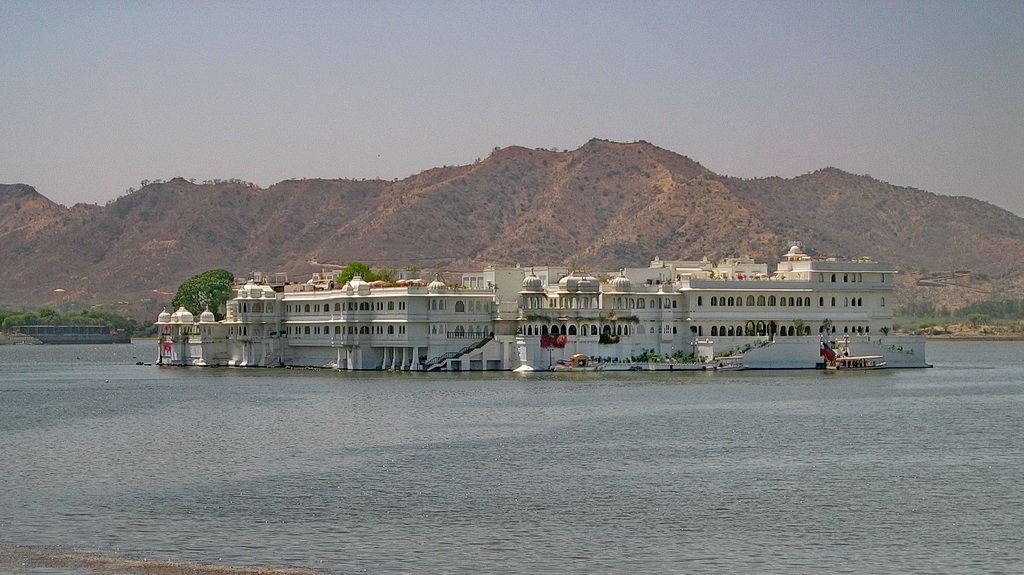
It is up to you how you will spend the day. Highlights are the city palace, the Jaghdish Temple as well as the Lake Palace, where the James Bond "Octopussy" film was made. What I myself like best is a walk through the endless small roads and streets, where time seems to have come to a stop, and people live like hundreds of years ago. Udaipur is a paradise for souvenir hunters.
13. Day: Udaipur - Bundi / ca. 270 km
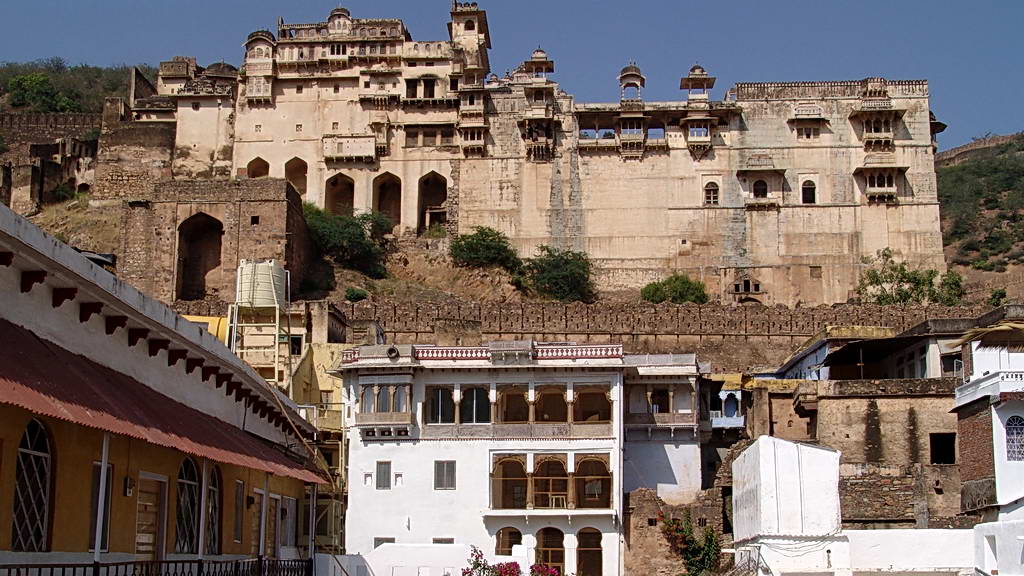
At first, we direct towards the well-built highway. Lots of kilometers are ahead of us. If you like, we make a short stop in Chittorgarh and visit the local fortress. Then back to the highway, until we arrive in Bijolia on a small side road. Now we are really deep inside Rajasthan. Wide agricultural fields and tiny picturesque villages dominate the landscape. Early in the evening, we'll reach Bundi.
14. Day: Bundi - Ranthambore / ca. 130 km
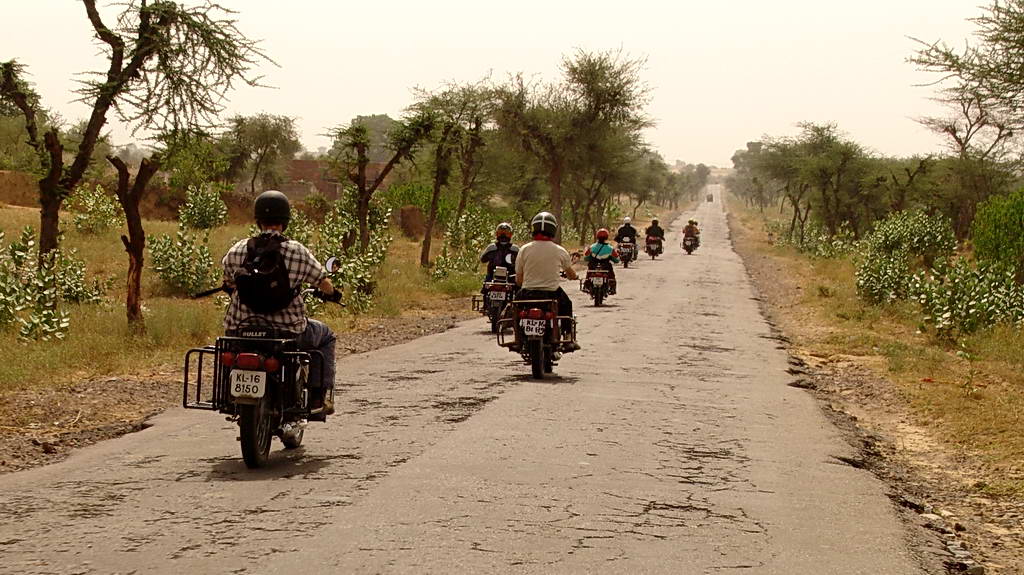
And the tour goes on in the backlands of Rajasthan. The roads no longer are as good as they are in other parts of the country. But we are rewarded by wonderful landscapes and picturesque villages. Fotographers will be fully rewarded. In Ranthambore, we stay in a small resort with pool. Who likes, can go on his first safari to "chase tigers" in the afternoon.
15. Day: Ranthambore - Jaipur / ca. 150 km
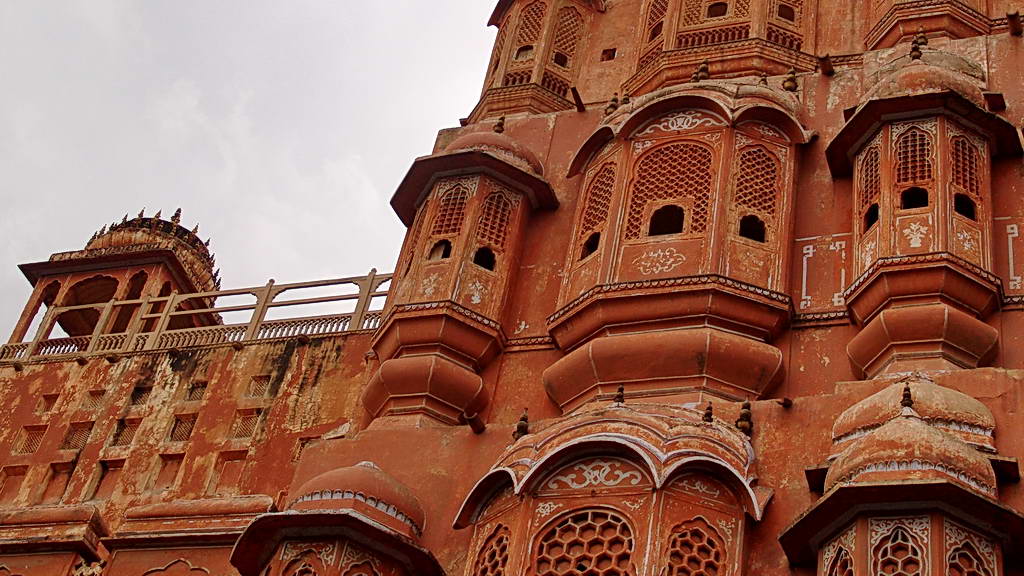
Want to see tigers? Of course there is no guarantee that you'll get to see one during of the safaris. But it is worth a try. The Ranthambore National Park is a real juwel, and the three hour trip brings you close in the wildlife of India. By noontime, we'll start towards Jaipur, where we'll arrive after about 4 hours.
16. Day: Jaipur
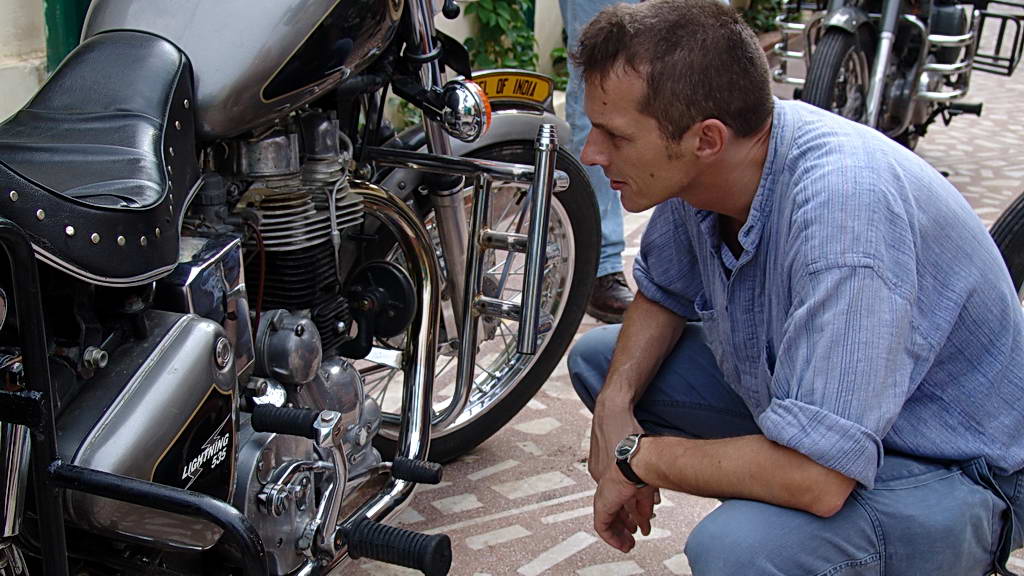
Jaipur, the capital of Rajasthan, is also known as the Red City or Pink City. End of the 19th century, the Maharadscha of the time welcomed the British Vice King by having all houses painted red, the colour of welcome. Until today, this tradition is alive in the old town. We'll visit the palace of the winds, the observatory and take a walk in the big old town bazar.
17. Day: Jaipur - Agra / ca. 240 km
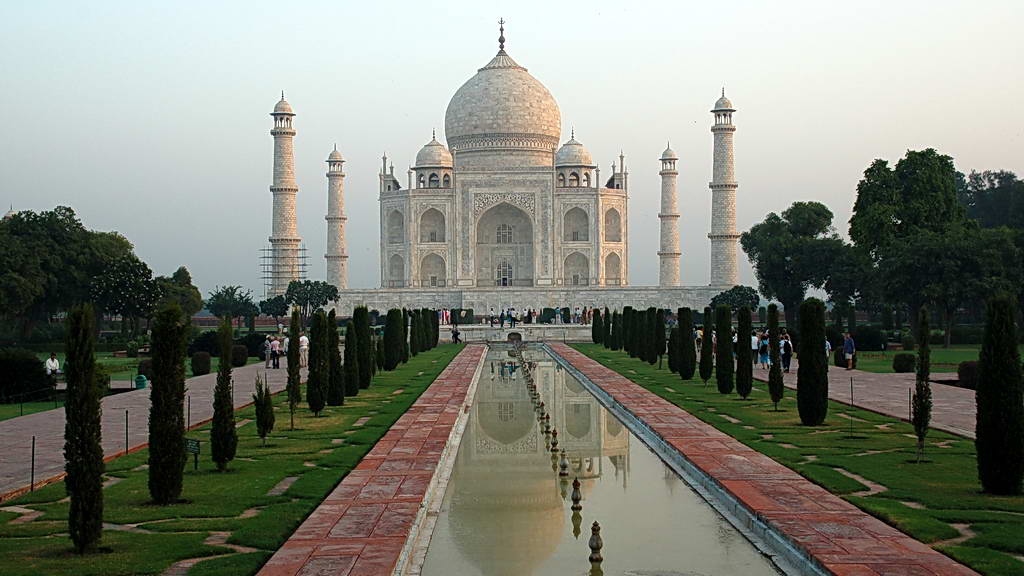
Highway No. 11 is a completely new construction of the last years and should be ready by now. We will have fun riding our Enfields and make the 230 kilometers to Agra in a time near record, concerning the Indian conditions. A nice pool and ice-cold Kingfisher beer will wait for us in the hotel. If you like, you can take a walk in this typical Indian mega city. Next morning we'll start early, so it is better to be in bed early.
18. Day: Agra - Delhi / ca. 200 km
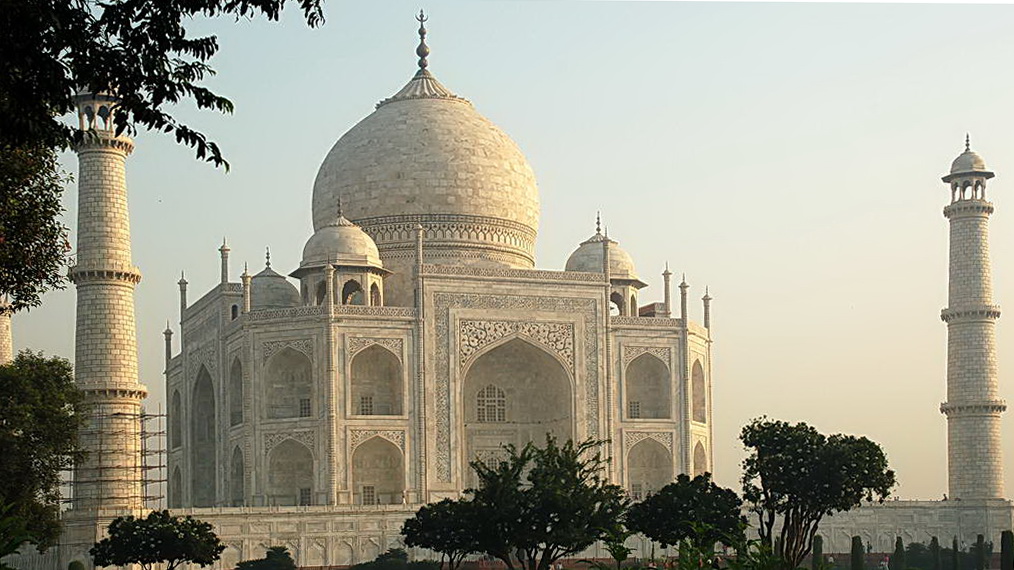
Early morning is the best time for visiting the Taj Mahal. At 6 o'clock, we must be at the ticket counter. It is a breathtaking experience when the warm rosy sunlight enlightens the brilliantly white marble of the mausoleum, a view you'll never forget. Breakfast follows. By noon, we ride back to Delhi where we'll reach our hotel early evening. After dinner most of you leave for the airport, since most of the flights back home take place in the middle of the night.
19. Day: Flight home
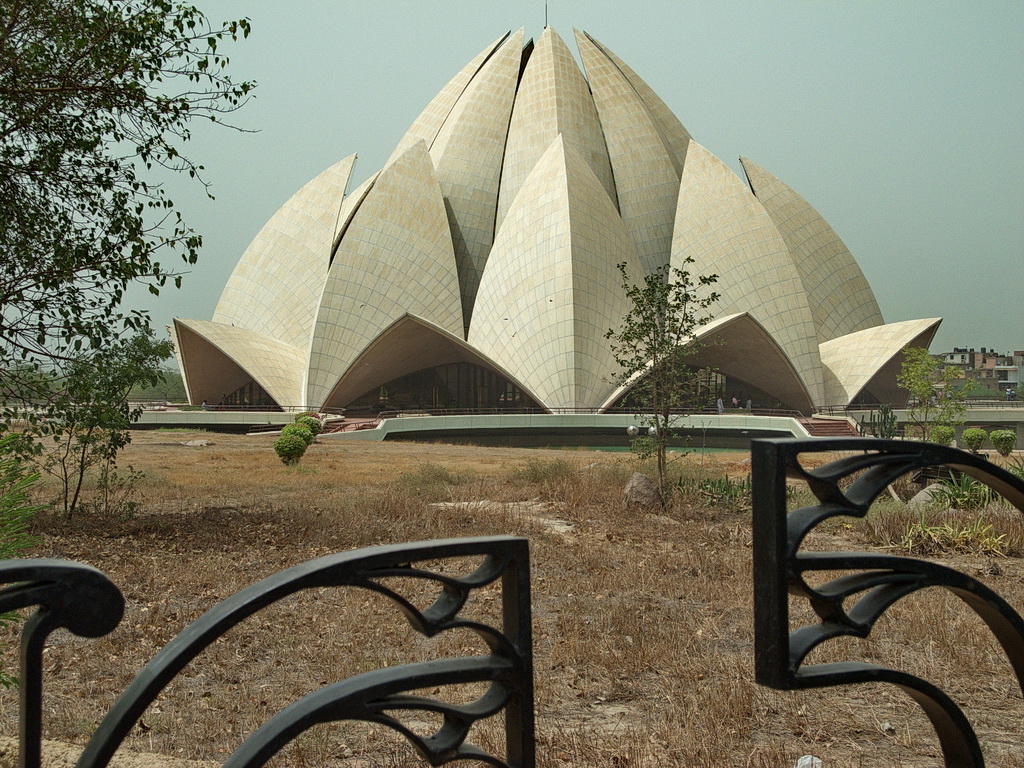
For those who have not yet flown back in the night, there is still breakfast and then it is off to the airport.Our travel across time space has come to an end. We hope to have enthused you with a pleasant, adventurous tour of India. If you liked it, why don't you come back, next time maybe to the South or to the "top of the world", to Ladakh or Garhwal in the Himalayas.
Until then, Namaste and good bye!









